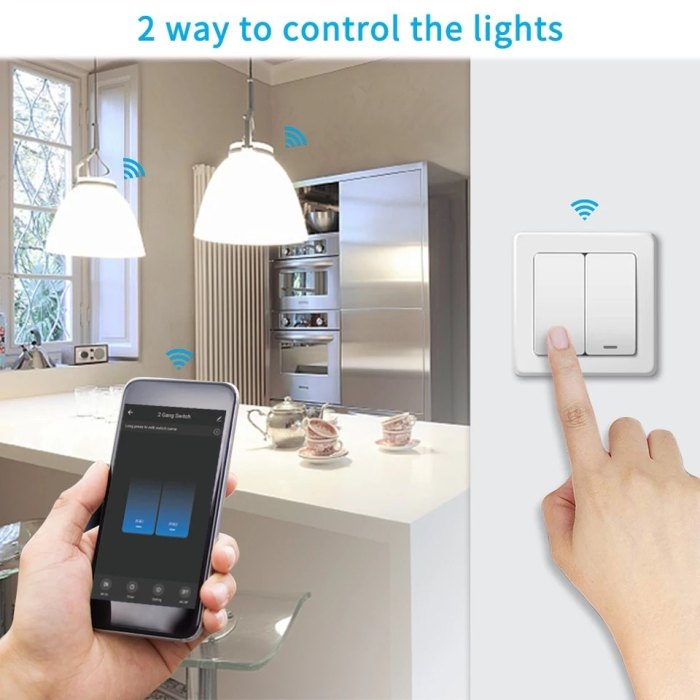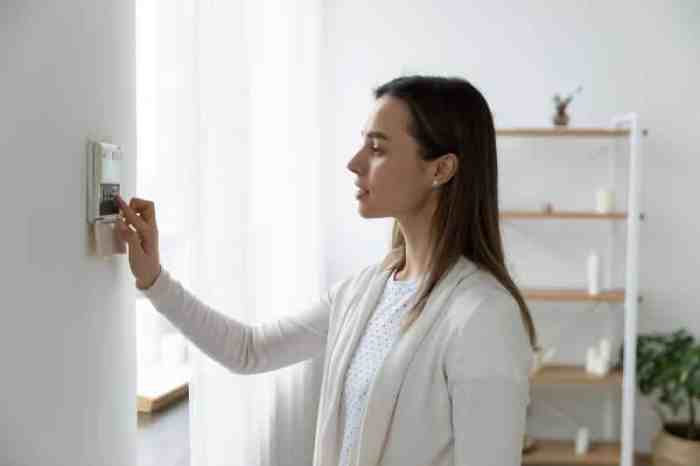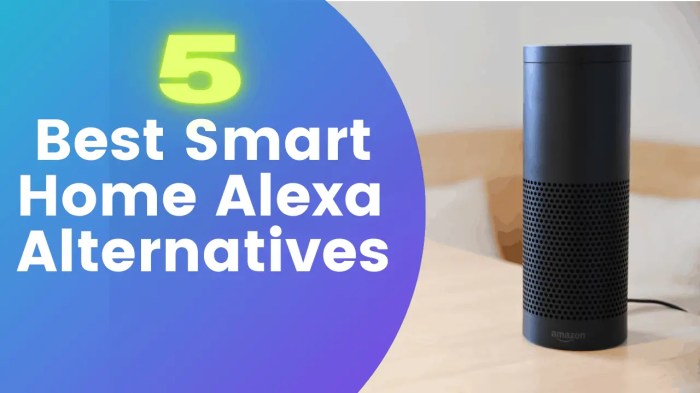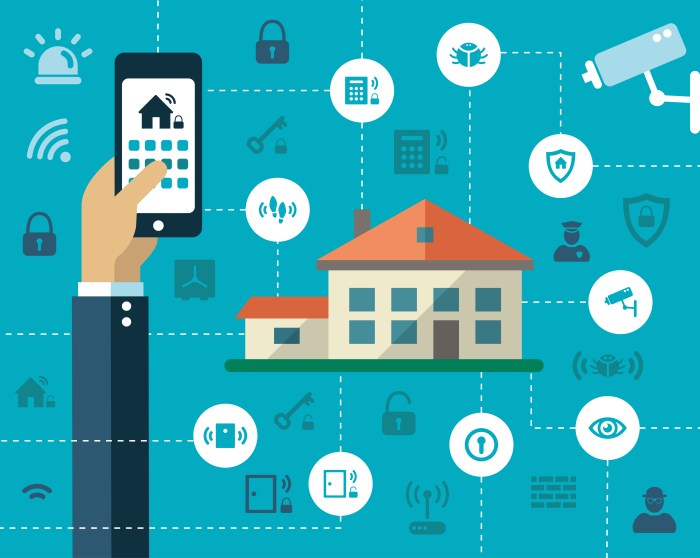In the realm of home automation, smart home devices have revolutionized the way we interact with our living spaces. However, the high cost, security concerns, and limited customization options often hinder their widespread adoption. This guide delves into the world of smart home alternatives, offering cost-effective, secure, and sustainable solutions that empower homeowners to create intelligent homes without compromising convenience or privacy.
From DIY projects and open-source platforms to energy-efficient devices and eco-friendly technologies, this comprehensive guide explores the diverse landscape of smart home alternatives. Discover how these alternatives can transform your home into a smart and sustainable haven, enhancing comfort, security, and convenience while respecting your budget and privacy.
Smart Home Devices and Alternatives
The realm of smart home technology offers a plethora of devices designed to enhance convenience, comfort, and security. However, it is essential to consider alternatives to these devices that provide similar functionality while potentially offering additional benefits or addressing concerns.
Let’s explore a comprehensive list of smart home devices and their respective alternatives, delving into their purpose, benefits, and drawbacks.
Smart Thermostats and Alternatives
- Smart Thermostats:
- Purpose: Efficiently manage home temperature and reduce energy consumption.
- Benefits: Remote control, scheduling, energy savings, and integration with other smart devices.
- Drawbacks: Higher cost, potential compatibility issues, and reliance on internet connectivity.
- Alternatives:
- Programmable Thermostats:
- Purpose: Allow for basic scheduling and temperature adjustments.
- Benefits: Simple to use, cost-effective, and energy-efficient.
- Drawbacks: Lack of remote control and integration features.
- Manual Thermostats:
- Purpose: Provide basic temperature control.
- Benefits: Simple to use, cost-effective, and reliable.
- Drawbacks: Lack of scheduling and remote control features.
Cost-Effective Solutions
Smart home alternatives offer cost-effective options compared to traditional smart home devices. DIY projects and open-source software provide a way to achieve smart home functionality without the associated high costs. These alternatives allow for customization and flexibility, enabling users to tailor their smart home setup to their specific needs and budget.
DIY Projects
DIY projects are a cost-effective way to create smart home devices. With the availability of tutorials, kits, and online communities, individuals can build their own smart home devices using readily available components. DIY projects allow for customization, enabling users to create devices that are tailored to their specific needs and preferences.
For example, individuals can build their own smart light switches, motion sensors, and temperature controllers.
Privacy and Security Considerations

Smart home devices, while convenient, raise concerns about privacy and security. Traditional smart home devices often collect and share user data without transparent consent, posing potential risks. Smart home alternatives offer enhanced privacy and security features, mitigating these risks and providing users with greater control over their data.
Potential Risks of Smart Home Devices
Traditional smart home devices may come with vulnerabilities that can be exploited by malicious actors, leading to various security risks:
- Unauthorised Access: Hackers can gain unauthorised access to smart devices, potentially controlling them or stealing sensitive information.
- Data Collection and Sharing: Smart devices often collect and share user data without clear consent, raising concerns about data privacy and misuse.
- Malware and Viruses: Smart devices can be infected with malware or viruses, compromising their security and potentially spreading to other devices on the network.
- Weak Encryption: Some smart devices may use weak encryption methods, making it easier for attackers to intercept and decrypt sensitive data.
Mitigating Risks with Smart Home Alternatives
Smart home alternatives prioritise privacy and security, offering features and measures to mitigate the risks associated with traditional smart home devices:
- Strong Encryption: Alternatives often employ robust encryption algorithms to protect data transmission and storage, minimising the risk of unauthorised access.
- Local Data Storage: Unlike cloud-based smart devices, alternatives often store data locally, reducing the risk of data breaches and unauthorised access.
- Transparent Data Collection: Alternatives typically provide transparent information about data collection and usage, allowing users to make informed choices about sharing their data.
- User Control and Customisation: Alternatives often offer customisation options, allowing users to control the collection and sharing of their data, as well as device functionality.
Importance of Data Protection and User Control
In smart home systems, data protection and user control are crucial for safeguarding privacy and preventing security breaches:
- Data Protection: Protecting user data from unauthorised access, misuse, and breaches is essential for maintaining privacy and preventing data leaks.
- User Control: Empowering users with control over their data, including collection, storage, and sharing, enables them to make informed decisions about their privacy.
- Transparency and Accountability: Smart home systems should provide transparent information about data collection and usage, fostering accountability and trust among users.
By prioritising privacy and security, smart home alternatives offer users greater control over their data, minimise security risks, and promote transparency and accountability in smart home systems.
Customization and Flexibility
Smart home alternatives offer extensive customization options, allowing users to tailor their systems to their specific needs and preferences. Unlike proprietary smart home devices, alternatives often come with open-source software and hardware, providing users with the freedom to modify and personalize their systems.
Open-Source Platforms
Open-source platforms like Home Assistant, OpenHAB, and Domoticz provide users with a wide range of customization options. These platforms allow users to integrate various smart home devices from different manufacturers, creating a unified and cohesive system. Additionally, users can develop their own custom automations, scripts, and integrations, further enhancing the functionality of their smart homes.
DIY Projects
DIY smart home projects offer the ultimate level of customization. Users can build their own smart home devices from scratch, using open-source hardware platforms like Arduino and Raspberry Pi. This approach provides complete control over the design, functionality, and appearance of the smart home system.
DIY projects allow users to create unique and personalized smart home solutions that perfectly match their needs and preferences.
Sustainability and Environmental Impact

Smart home devices and their alternatives can have a significant environmental impact. On the one hand, smart devices can contribute to energy efficiency and resource conservation by automating tasks, monitoring usage, and optimizing performance. On the other hand, the production, use, and disposal of these devices can also lead to negative environmental consequences.
Energy Efficiency and Resource Conservation
Smart home devices can help reduce energy consumption by automating tasks such as lighting, heating, and cooling. For example, smart thermostats can learn a household’s heating and cooling preferences and adjust the temperature accordingly, saving energy. Smart light bulbs can be programmed to turn off when no one is in a room, reducing electricity usage.
Smart appliances can also be programmed to run during off-peak hours, when electricity rates are lower.
Environmental Impact of Smart Home Devices
The production, use, and disposal of smart home devices can also have negative environmental consequences. The manufacturing of these devices requires the extraction and processing of raw materials, which can lead to pollution and habitat destruction. The use of smart devices also contributes to electronic waste (e-waste), which is a growing environmental problem.
E-waste contains hazardous materials that can leach into the environment if not disposed of properly.
Sustainable Design Principles and Eco-Friendly Technologies
Some smart home alternatives incorporate sustainable design principles and eco-friendly technologies to minimize their environmental impact. For example, some smart thermostats are made from recycled materials and are designed to be energy efficient. Some smart light bulbs use LED technology, which is more energy-efficient than traditional incandescent bulbs.
Some smart appliances are designed to be water-efficient and energy-efficient.
Examples of Sustainable Smart Home Alternatives
Here are some examples of smart home alternatives that incorporate sustainable design principles and eco-friendly technologies:
- Smart thermostats: These thermostats are made from recycled materials and are designed to be energy efficient. They can learn a household’s heating and cooling preferences and adjust the temperature accordingly, saving energy.
- Smart light bulbs: These light bulbs use LED technology, which is more energy-efficient than traditional incandescent bulbs. They can be programmed to turn off when no one is in a room, reducing electricity usage.
- Smart appliances: These appliances are designed to be water-efficient and energy-efficient. They can be programmed to run during off-peak hours, when electricity rates are lower.
- Smart home hubs: These hubs can be used to control a variety of smart home devices, including lights, thermostats, and appliances. They can be programmed to create scenes that automate tasks and save energy.
Smart Home Alternatives for Different Applications

Smart home alternatives offer versatile solutions for various home automation needs. These alternatives can be effectively utilized in a wide range of applications, enhancing the functionality and efficiency of home systems.
Home Automation
Smart home alternatives provide cost-effective and flexible options for automating various household tasks. For instance, programmable thermostats can be used to regulate temperature efficiently, reducing energy consumption. Smart lighting systems allow for customized lighting schedules and remote control, enhancing convenience and security.
Additionally, smart irrigation controllers can optimize water usage by adjusting watering schedules based on weather conditions.
Energy Management
Smart home alternatives play a crucial role in energy management. Smart plugs can monitor and control the energy consumption of appliances, allowing users to identify and reduce energy wastage. Smart thermostats, as mentioned earlier, can optimize heating and cooling systems to minimize energy usage.
Moreover, smart energy monitors provide real-time insights into energy consumption patterns, enabling users to make informed decisions about their energy usage.
Security
Smart home alternatives offer enhanced security measures for homes. Smart security cameras provide remote monitoring capabilities, allowing homeowners to keep an eye on their property from anywhere. Motion sensors and smart doorbells can detect and alert users to suspicious activities.
Additionally, smart locks can be controlled remotely, providing added convenience and security.
Entertainment
Smart home alternatives offer a range of options for enhancing home entertainment systems. Smart TVs with built-in streaming capabilities provide access to a vast array of content. Smart speakers and home theater systems deliver high-quality audio experiences. Additionally, smart lighting systems can be integrated with entertainment systems to create immersive lighting effects that enhance the overall entertainment experience.
DIY Projects and Open-Source Solutions

Embark on a journey into the realm of do-it-yourself (DIY) projects and open-source platforms, where you can create your own smart home alternatives. Experience the satisfaction of building your own smart home solutions, tailoring them to your specific needs and preferences.
Building your own smart home solutions offers numerous advantages. You gain complete control over the design, functionality, and privacy of your system. Additionally, DIY projects often provide cost-effective alternatives to commercial smart home devices, allowing you to create a smart home without breaking the bank.
Challenges of DIY Smart Home Solutions
While DIY smart home solutions offer many benefits, there are also challenges to consider. These projects require technical expertise, time, and effort to complete successfully. Troubleshooting and maintenance can also be more complex compared to commercial solutions. Additionally, DIY projects may not be as polished or user-friendly as commercial products.
Popular DIY Smart Home Projects
Explore a range of popular DIY smart home projects that cater to various needs and skill levels. These projects include:
- Smart Thermostat: Build your own smart thermostat to control your home’s temperature efficiently. This project involves integrating sensors, microcontrollers, and a user interface to create a customizable thermostat.
- DIY Home Security System: Create a DIY home security system using motion sensors, cameras, and a central control unit. This system can be customized to your specific security needs and can be integrated with other smart home devices.
- Smart Lighting System: Build a smart lighting system using LED bulbs, controllers, and a mobile app. This project allows you to control the brightness, color, and scheduling of your lights.
These projects provide a glimpse into the possibilities of DIY smart home solutions. With creativity and technical expertise, you can create a smart home that meets your unique requirements and preferences.
Future Trends and Innovations

As the smart home market continues to evolve, several emerging trends and innovations are poised to shape the future of this technology. These advancements have the potential to enhance user experience, improve functionality, and drive wider adoption of smart home alternatives.
Enhanced Interoperability and Connectivity
The future of smart home alternatives lies in enhanced interoperability and connectivity. Open standards and protocols will enable seamless communication between devices from different manufacturers, allowing for a more cohesive and user-friendly smart home ecosystem. This will eliminate the need for multiple apps and platforms, simplifying the control and management of smart devices.
Additionally, the integration of smart home technology with 5G networks and the Internet of Things (IoT) will unlock new possibilities for remote access, real-time monitoring, and automated tasks.
Artificial Intelligence and Machine Learning
Artificial intelligence (AI) and machine learning (ML) algorithms will play a pivotal role in the future of smart home alternatives. These technologies will enable devices to learn user preferences, anticipate needs, and make autonomous decisions. For example, smart thermostats equipped with AI can adjust the temperature based on occupancy and weather conditions, while smart lighting systems can automatically adjust brightness levels depending on the time of day and ambient light.
By leveraging AI and ML, smart home alternatives will become more intelligent, proactive, and personalized, enhancing the overall user experience.
Increased Focus on Privacy and Security
With the growing concerns surrounding data privacy and security, future smart home alternatives will prioritize these aspects. Advanced encryption methods, secure authentication protocols, and robust cybersecurity measures will be implemented to safeguard user data and protect against unauthorized access. Additionally, users will have greater control over their data, with the ability to choose what information is shared and with whom.
By addressing these concerns, smart home alternatives can instill trust and confidence among consumers, encouraging wider adoption and ensuring the long-term success of this technology.
Sustainable and Energy-Efficient Solutions
As the world moves towards a more sustainable future, smart home alternatives will play a crucial role in reducing energy consumption and minimizing environmental impact. Innovations in energy-efficient technologies, such as smart thermostats, smart lighting systems, and smart appliances, will enable users to optimize energy usage, reduce carbon emissions, and save money on utility bills.
Additionally, the integration of renewable energy sources, such as solar panels and wind turbines, with smart home systems will allow homeowners to generate their own clean energy and achieve greater energy independence.
DIY and Open-Source Platforms
The DIY and open-source movement will continue to drive innovation in the smart home alternatives market. Open-source platforms and affordable DIY kits will empower users to create their own customized smart home solutions, tailored to their specific needs and preferences.
This trend will democratize smart home technology, making it more accessible and affordable for a wider range of consumers. Furthermore, the open-source community will foster collaboration and knowledge sharing, leading to the development of innovative new smart home products and solutions.
Outcome Summary
As the smart home landscape continues to evolve, the possibilities for innovation and customization are endless. Smart home alternatives empower homeowners to create truly personalized and sustainable living spaces, fostering a harmonious blend of technology and comfort. Embrace the world of smart home alternatives and unlock the potential of your home to become an intelligent, secure, and eco-conscious haven.
FAQ
What are the key advantages of smart home alternatives?
Smart home alternatives offer several advantages, including cost-effectiveness, enhanced privacy and security, greater customization options, and a reduced environmental impact compared to traditional smart home devices.
How can I build my own smart home alternatives?
Building your own smart home alternatives involves utilizing DIY projects and open-source platforms. These projects often require technical expertise and time investment, but they provide a cost-effective and customizable approach to home automation.
Are smart home alternatives secure?
Smart home alternatives can offer enhanced security compared to traditional smart home devices. Open-source platforms and DIY projects allow for greater control over data and privacy, reducing the risk of cyberattacks and data breaches.
How do smart home alternatives contribute to sustainability?
Smart home alternatives often incorporate energy-efficient technologies and sustainable design principles. These alternatives can help reduce energy consumption, conserve resources, and minimize the environmental impact of home automation.